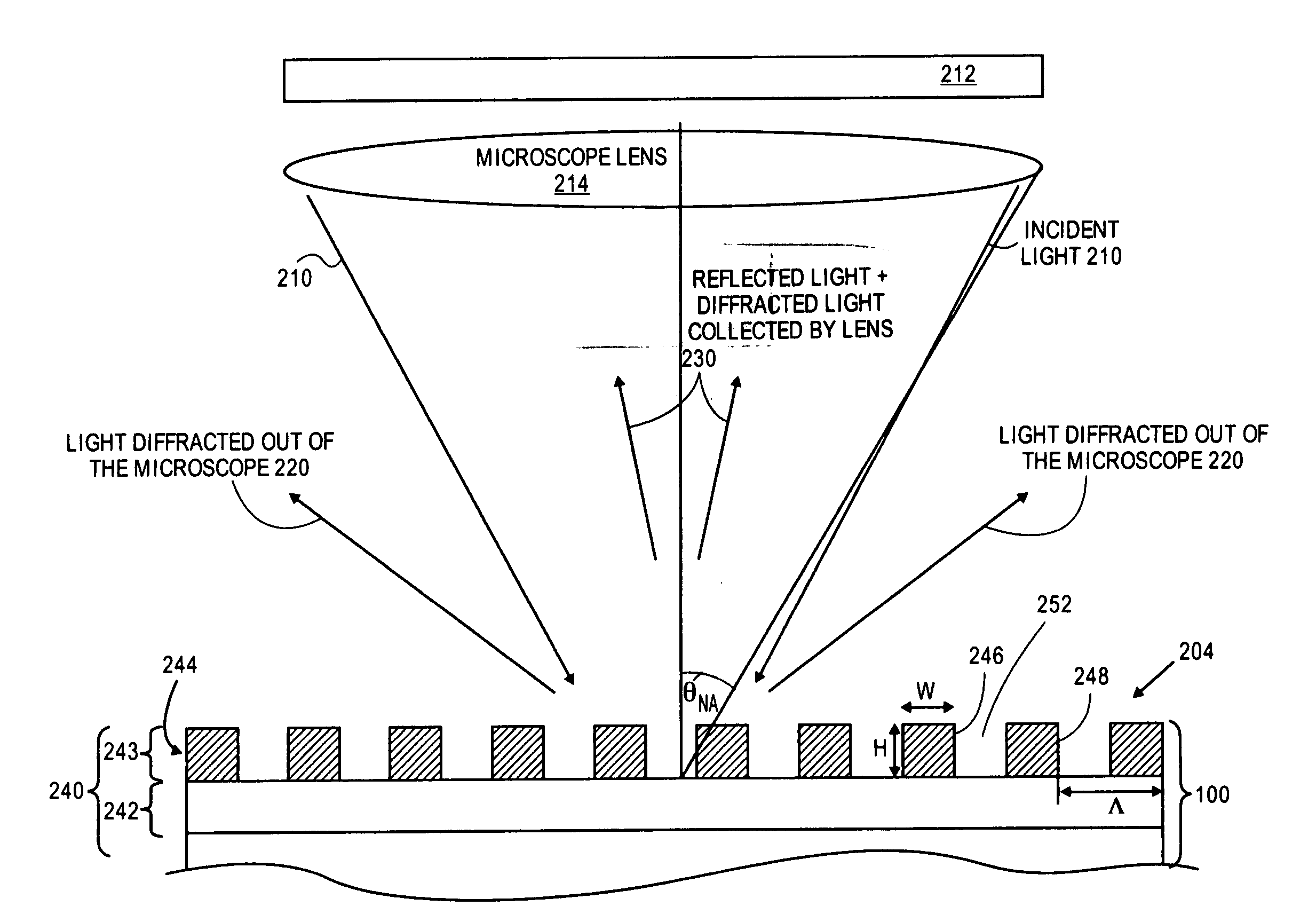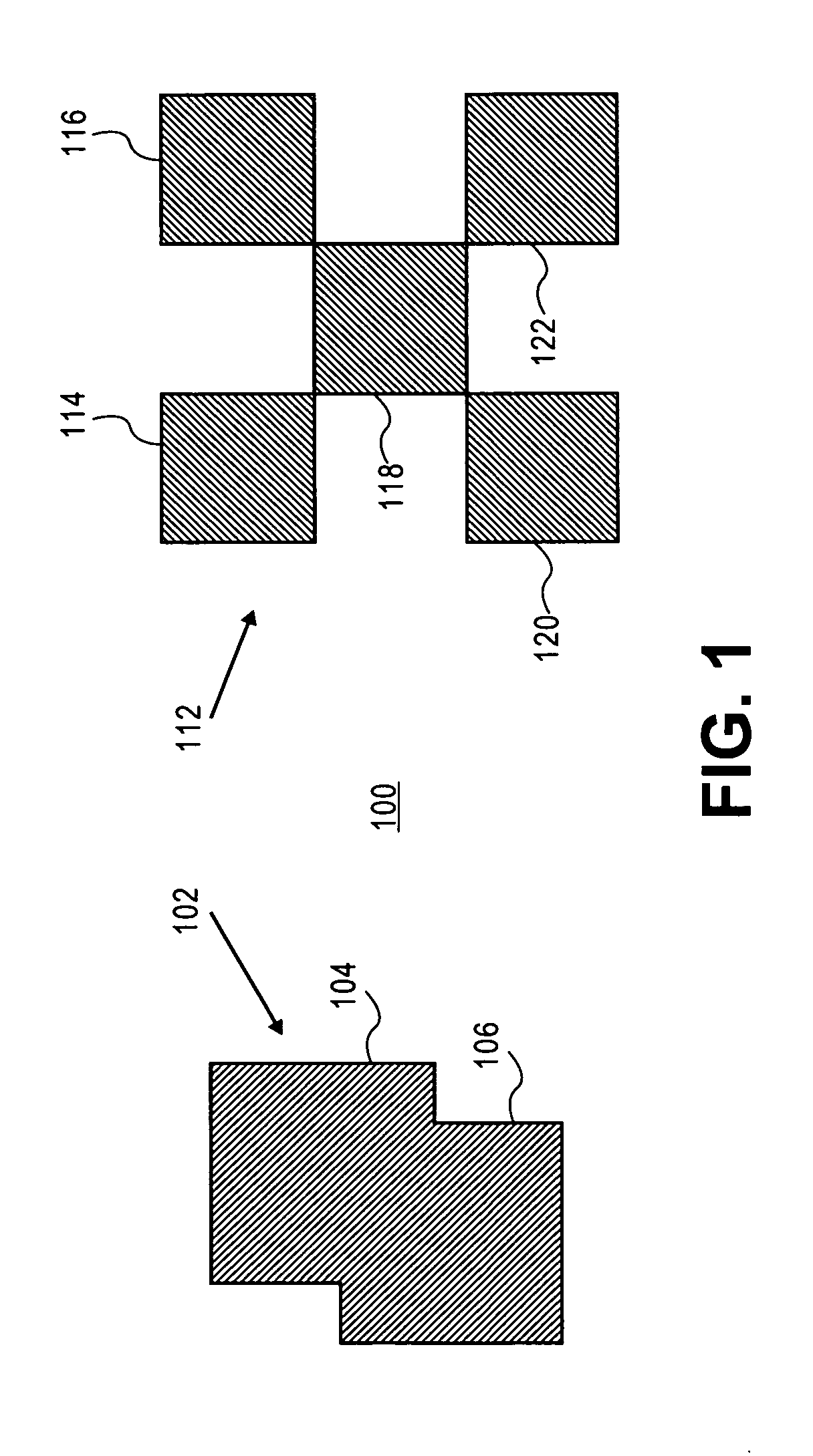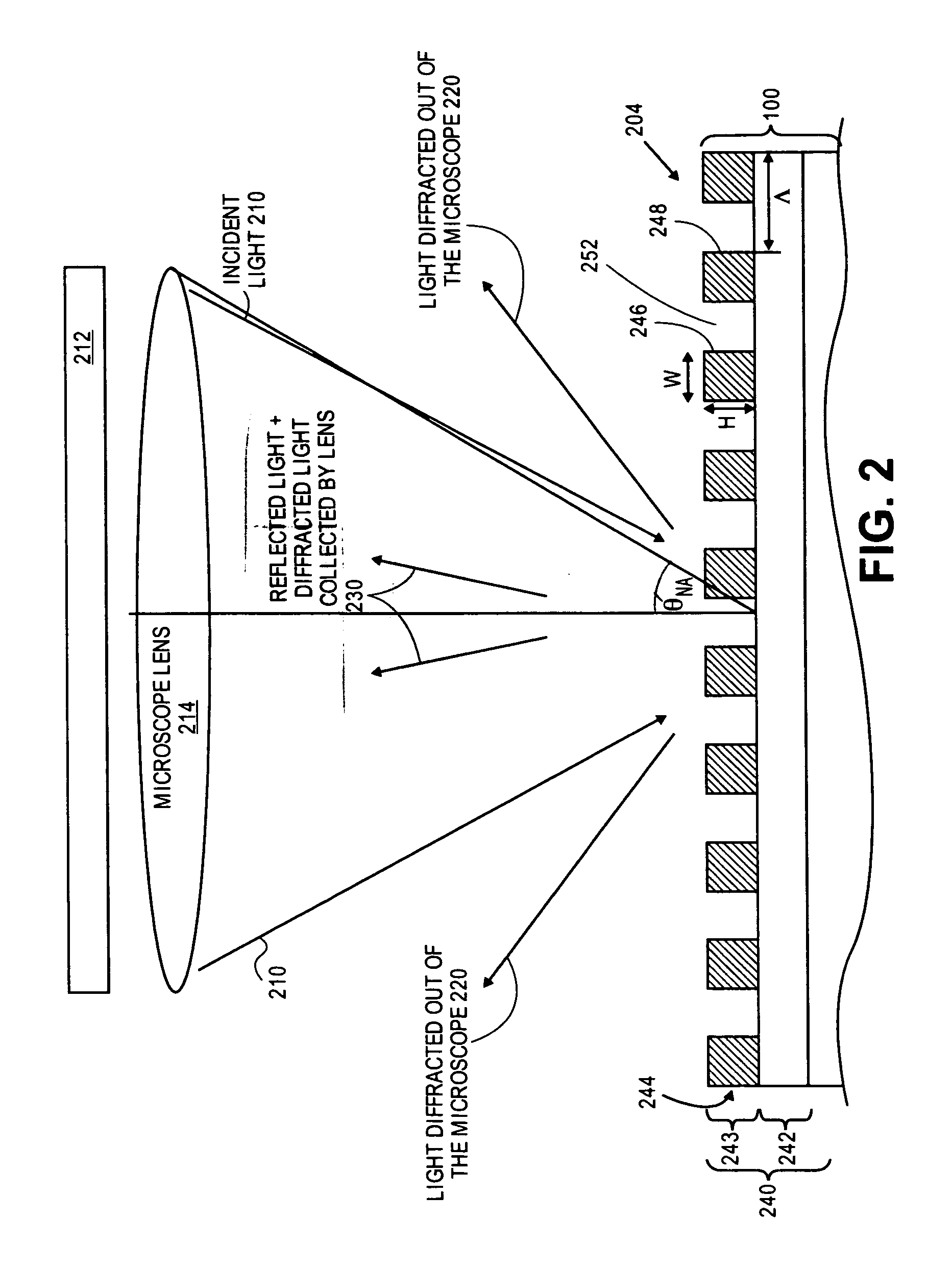Wafer-based optical pattern recognition targets using regions of gratings
a technology of optical pattern recognition and optical pattern, applied in the field of optical pattern recognition targets, can solve the problems of large pattern defects and incompatibility of structures
- Summary
- Abstract
- Description
- Claims
- Application Information
AI Technical Summary
Problems solved by technology
Method used
Image
Examples
Embodiment Construction
[0028]FIG. 1 is a schematic top perspective view of examples of pattern recognition targets (e.g., structures) in regions of a wafer that may be used for wafer alignment. The targets may be constructed from large patterns or structures of solid features arranged in some unique shape on or in wafer 100 (e.g., on a surface or topmost surface of wafer 100). For instance, FIG. 1 shows target 102 as a large structure having solid features 104 and 106 (e.g., solid features are not formed of gratings as mentioned below, but of solid flat layers of a single material in each region of the wafer surface).
[0029]Similarly, FIG. 1 shows target 112 as a large structure having solid features 114, 116, 118, 120, and 122. Each of features 104, 106, 114, 116, 118, 120, and 122 may be larger than the minimum resolution size (e.g., are greater than a best resolution limit possible) of a wafer alignment system inspection microscope (e.g., each of those features may be larger than a minimum size pixel th...
PUM
 Login to View More
Login to View More Abstract
Description
Claims
Application Information
 Login to View More
Login to View More - R&D
- Intellectual Property
- Life Sciences
- Materials
- Tech Scout
- Unparalleled Data Quality
- Higher Quality Content
- 60% Fewer Hallucinations
Browse by: Latest US Patents, China's latest patents, Technical Efficacy Thesaurus, Application Domain, Technology Topic, Popular Technical Reports.
© 2025 PatSnap. All rights reserved.Legal|Privacy policy|Modern Slavery Act Transparency Statement|Sitemap|About US| Contact US: help@patsnap.com



